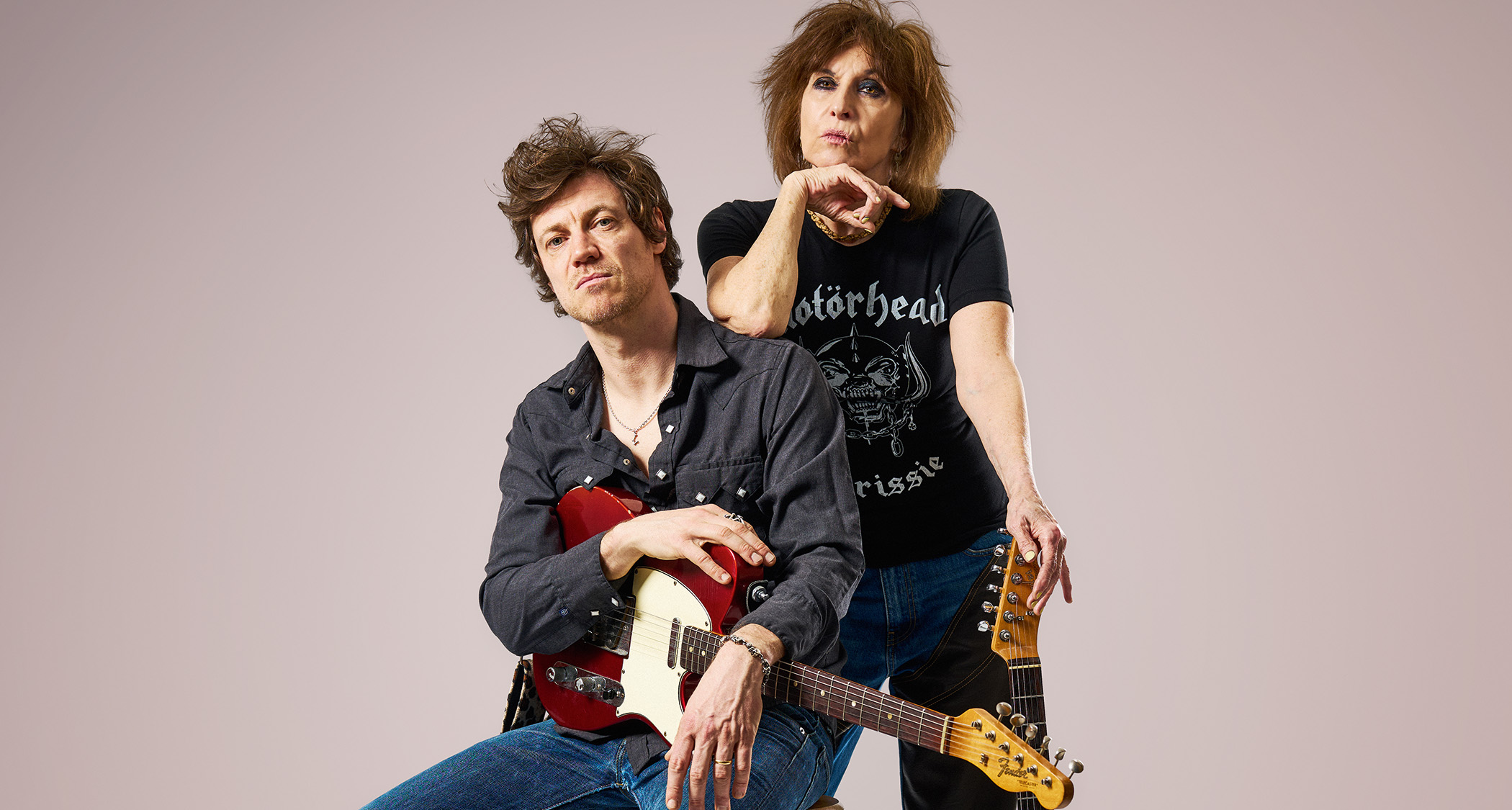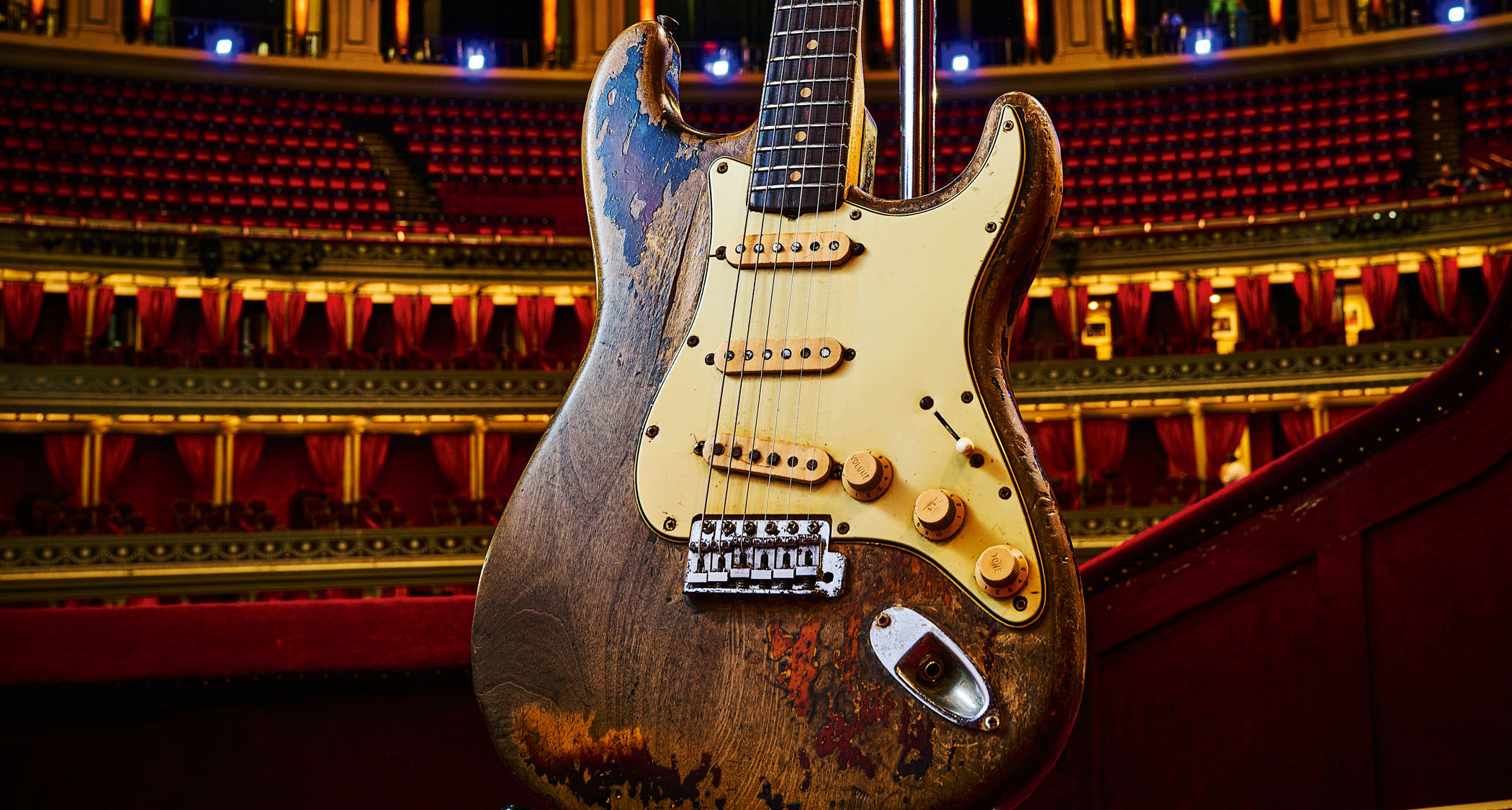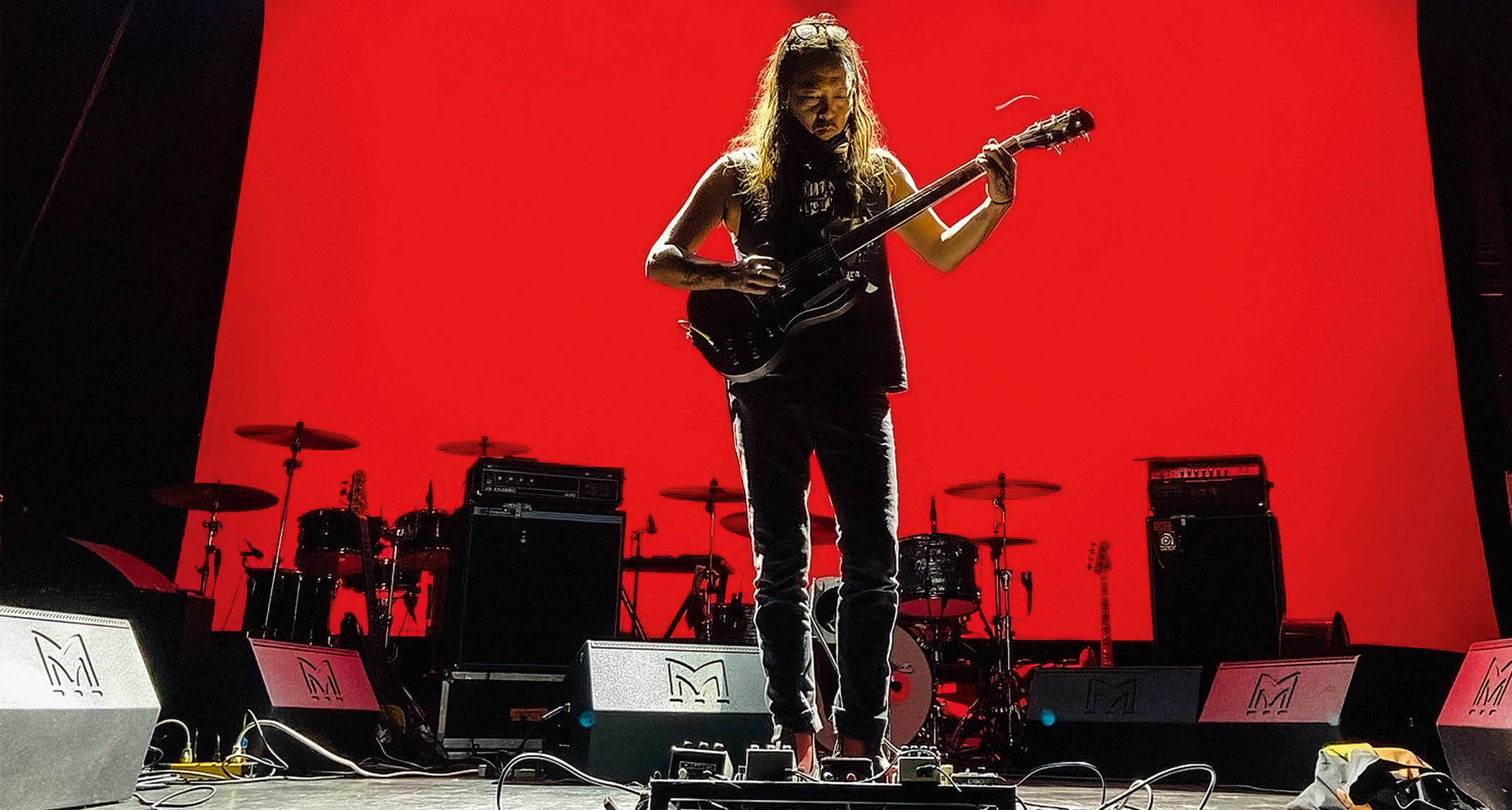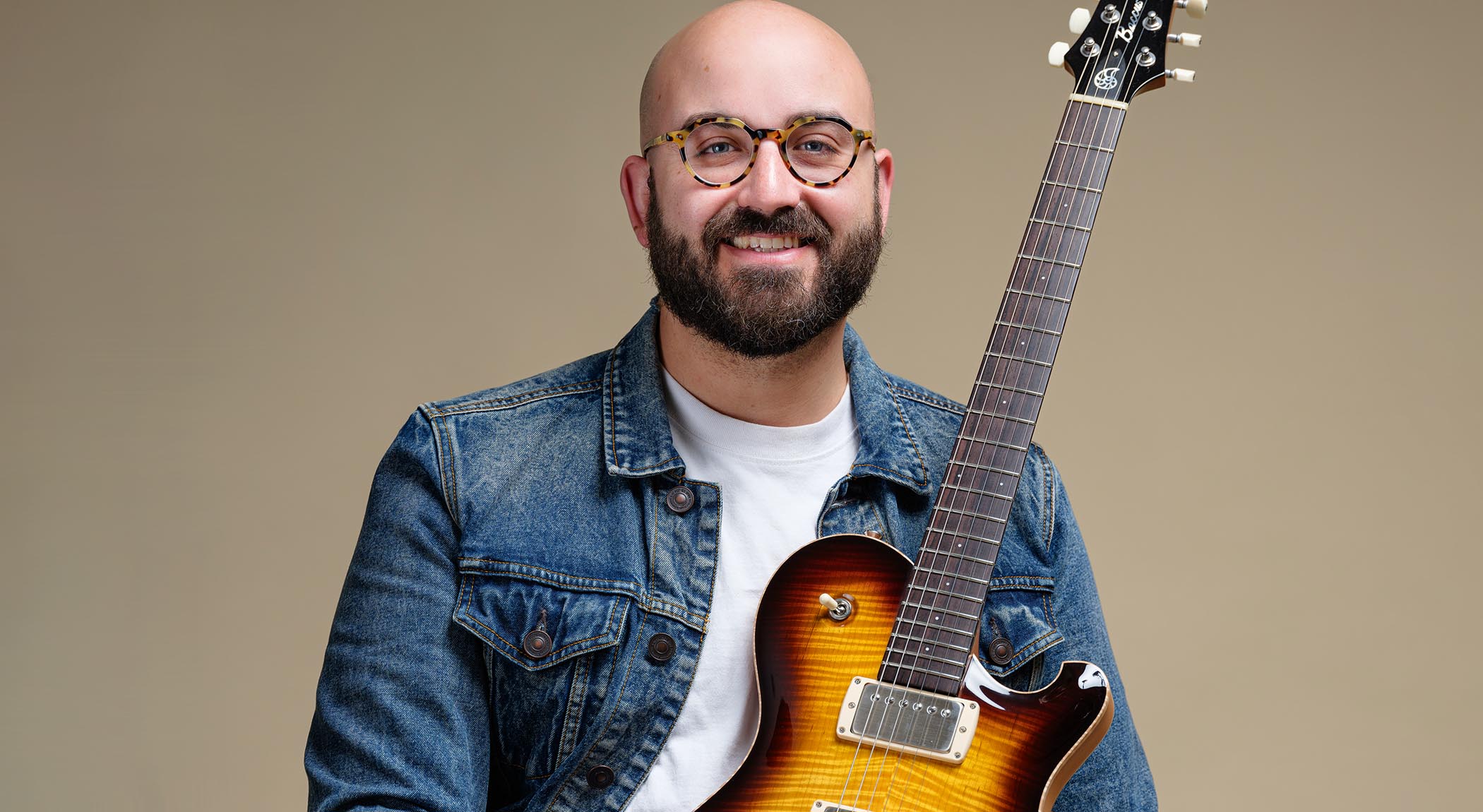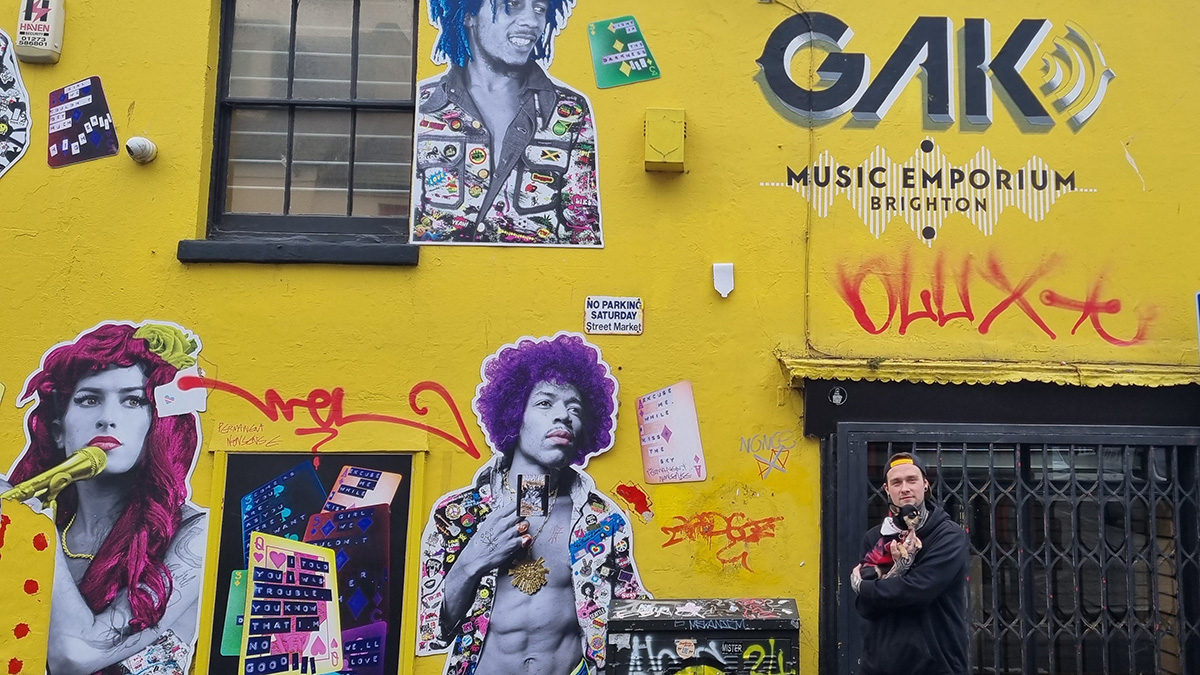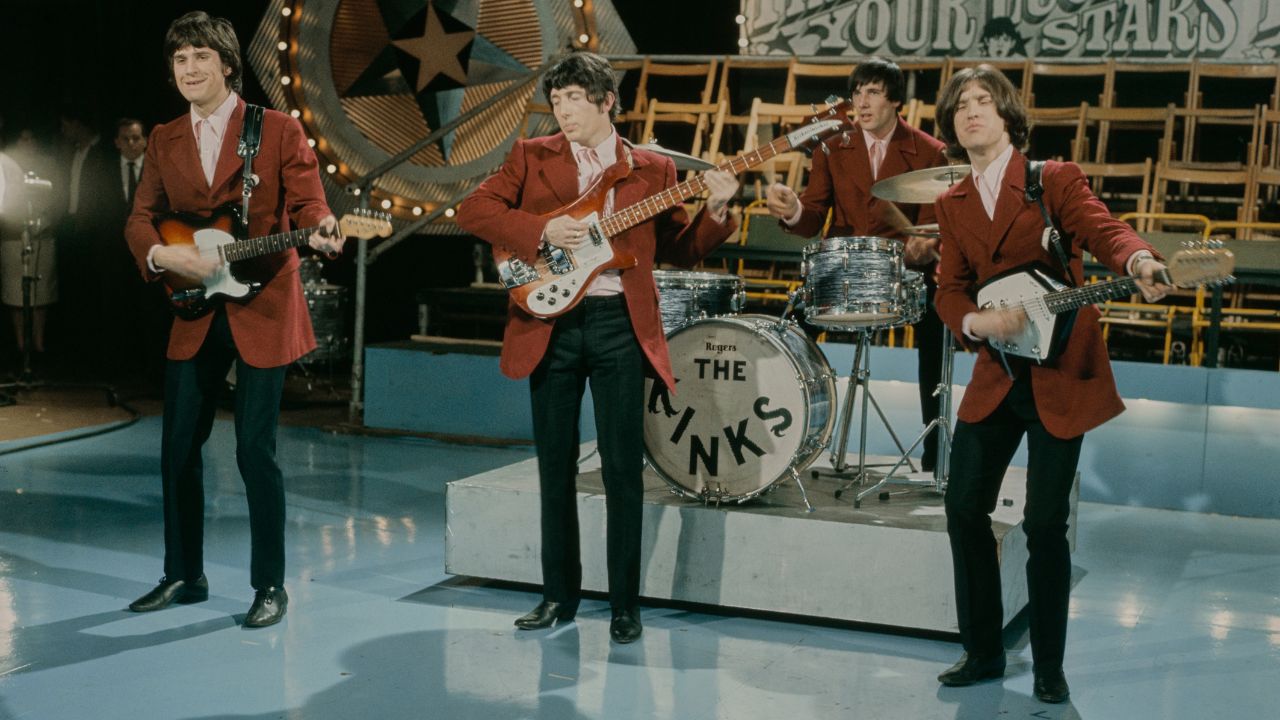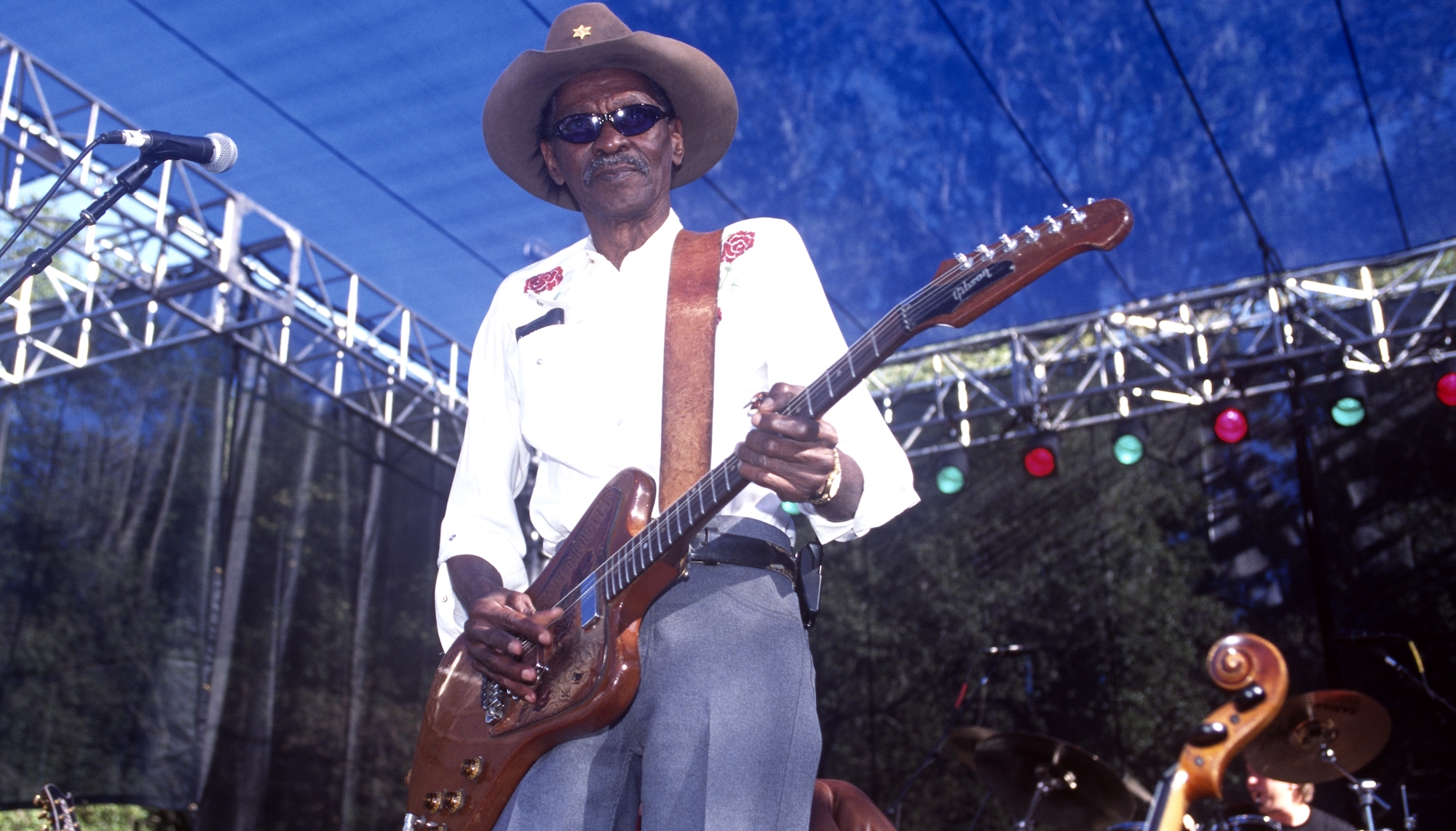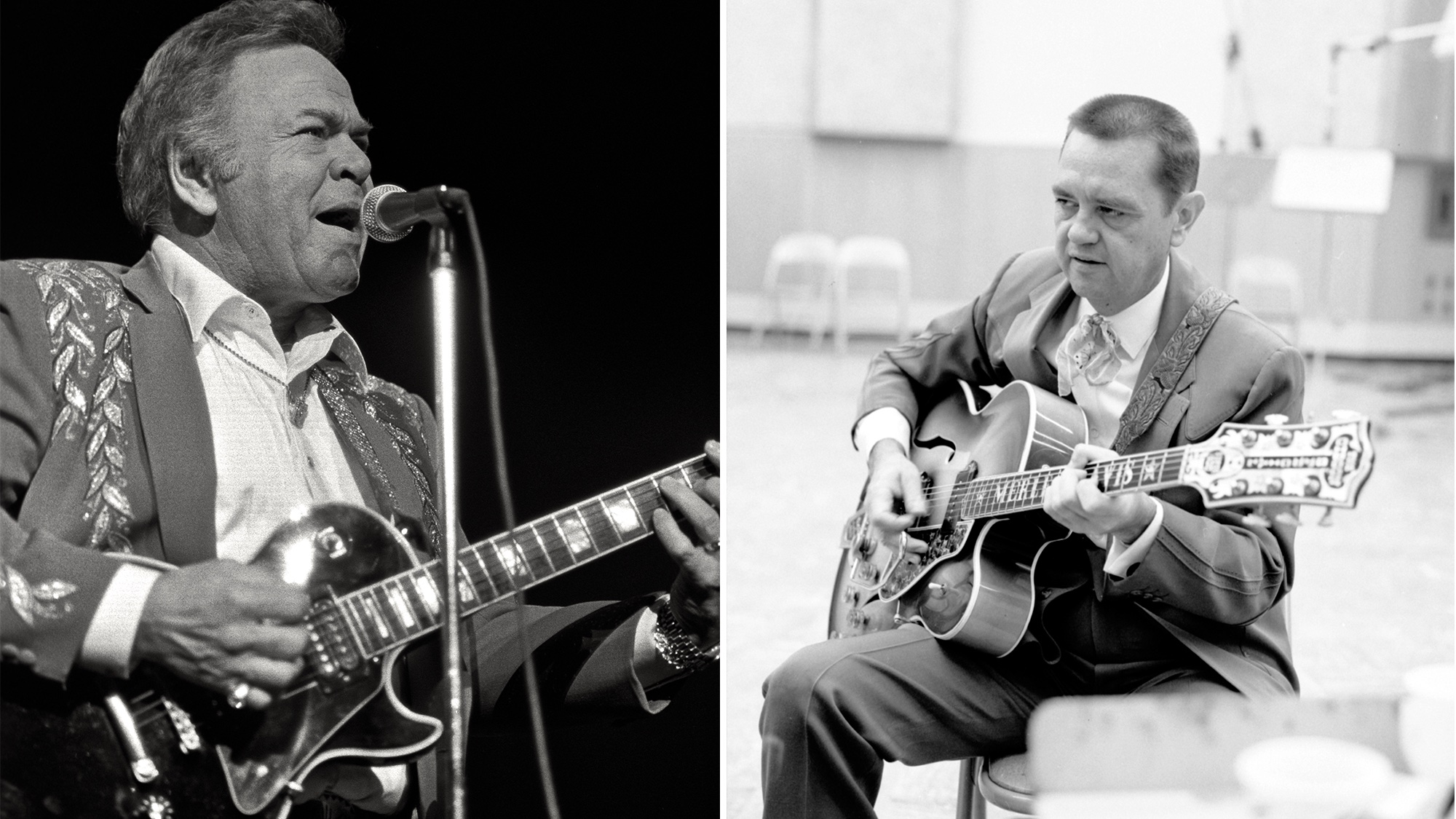Suicide Silence: "Instead of trying to write like Malmsteen or Vai, I like making people go, 'What the hell just happened?'"
Guitarists Mark Heylmun and Chris Garza talk gear, influences and returning to form with their latest album, Become the Hunter

Returning this year with sixth full-length Become The Hunter, Suicide Silence guitarists Mark Heylmun and Chris Garza felt it was about time they went back to doing what they do best. While their self-titled fifth album - produced by Ross Robinson [Slipknot, Korn, Sepultura] - marked a departure from the brain-bursting heaviness the Californian deathcore quintet were known for, its successor is more like the Suicide Silence of old, thriving in all kinds of wicked sonic extremities.
Considering everything they’ve been through since forming in 2002, including the tragic death of original frontman Mitch Lucker, this is a band who don’t give in too easily…
“I have a bit of unique perspective on all of that,” says Chris Garza, when asked about the reaction to that last self-titled offering. “People might say they want you to stay the same, but really they just want the best from you. You can take it either as shit-talking or they want you to stay the same or change. But really, all they want is the best from the band, so it’s important to not forget that...”
“I think it’s well apparent how our last album went against our usual methods of writing a record,” agrees Mark. “It ended up being very experimental. We wanted to write in a completely different way and obviously the response wasn’t exactly favorable. Some people liked it, but most of them didn’t seem to, which is totally fine.”
That said, for many fans this album will feel like a return to form for Suicide Silence...
Mark: “A lot of artists will make some sort of massive departure at some point after a few albums. We never really did that, so by the time we got to our fifth, it was all built up! So when you say Become The Hunter is like a return to form, that’s exactly what we wanted to do - head into a familiar space.
Songwriting is a mystery, we still don’t know how to do it… that’s the weird thing about creativity
Chris Garza
"Let’s stoke the fans and ourselves out, going back to some super heavy and fun shit. We went back to what originally excited us.”
Get The Pick Newsletter
All the latest guitar news, interviews, lessons, reviews, deals and more, direct to your inbox!
Chris: “Songwriting is a mystery, we still don’t know how to do it… that’s the weird thing about creativity. We always try to make the record that needs to be made. I look at each record we’ve put out as a journey and part of the story.
"The self-titled was the right thing to do at the time and this record is the right thing to do now, because it’s very apparent we needed to start over and start fresh. It took us doing that album with Ross Robinson to get to this one...”
And what did you learn from one the most prolific producers in metal?
Chris: “When we were making our first record, The Cleansing, the foundation for a lot of it came from ideas and techniques we’d heard Ross Robinson had used through the grapevine - like recording the first Slipknot album live or what he did with Korn or Limp Bizkit.
"We learned to do it live and keep it raw. We didn’t really know exactly what he did though, so there wasn’t the same toolbox those bands had working with him. So when we hooked up with him we realized what he did on a lot of those recordings. He’s really hands-on with the effects aspect of guitar. I could see him messing with pedals and switching knobs while we were recording. To see that first-hand was incredible… now we know!”
You ended up using one of Ross’ favored Marshall cabs on that last record. Did you go for a Marshall again this time round or go back to Mesa/Boogie?
Chris: “I’d never tracked with a Marshall in my life, but it was the same cabinet he used on the first and second Korn records, as well as Roots by Sepultura. So that thing had a lot of history, which is why I chose to use it.
"And yeah, I took that idea with me - on this new record I used a really old and beat-up Marshall cab that I got on eBay for $250, with my Mesa/Boogie on top. I’ve got a mid-90s two-channel Triple Rec that we’ve been using since our second record so I went back to that, trying to bring back a familiar sound.”
And what amps did you end up recording with, Mark?
Mark: “I used the JP-2C. The John Petrucci head fuckin’ rules, man. It’s got so much going for it, and it’s almost too editable, but all the tones are so good. I used it for my leads and rhythms, it was my main head this time round.
We’re pretty straightforward with shit, and not super decked out with pedals
Mark Heylmun
"That went through a Mesa/Boogie 4x12 with regular V30s and I also used these 15 inch and 12 inch cabinets that [producer] Steve Evetts had. He wanted to try it out to see how it sounded and I felt like it somehow cleaned everything up with a smoother and rounder tone. Coupled with the 4x12, it just sounded fuckin’ awesome. Obviously I’m not going to do that live…”
Are there any new pedals that came in handy while making the album?
Mark: “I didn’t need any overdrives for my main tone, I was just running straight in and cranking the gain. I didn’t even need any gates because in the studio you can chop out all the feedback easily enough.
"Me and Evetts both loved that old-school Electro-Harmonix Memory Man delays, which are like relics these days, I think you can find used ones for $600. They probably make a new version, but this thing looked like an old school Atari video game system.
"I also used a [Boss] DD-6 elsewhere, whenever I needed a more digital delay. There was also a Dunable Eidolon - they worked with Dave Davidson from Revocation on this reverb and delay pedal with a boost. For live, it’s phenomenal - you step on that thing and it’s all you need for your solo.
"On one song, Serene Obscene, we went super-Randy Rhoads and used these analog MXR reverb and delay pedals, trying to emulate the Diary Of A Madman solo which sounds like its in a cave and dripping wet. We’re pretty straightforward with shit, and not super-decked out with pedals.”
And how about you, Chris?
Chris: “The big one for me was a Horizon pedal made by Misha [Mansoor] from Periphery’s company. I need to give him a shout out for hooking me up with that! It’s the Precision Drive going into the two-channel Mesa and it sounded fuckin’ silly heavy. That was a big surprise, I didn’t expect it to be that intense.
"Generally I’ve used a TS9 Tube Screamer in front but after trying this, I had to use it. I know Mark tried it but it didn’t really fit as well… for my gear - particularly my head which sounds really different to all the other Triple Recs I’ve tried - it was a perfect storm.”
What else can you tell us about the guitars we hear on the new album?
Mark: “For guitars, it was that same ESP Custom as last time, my camouflage V, as well as another Custom in another finish. Here comes the tonewood conversation - it’s the same guitar, but it doesn’t sound the same though. It’s a little less bright and more bold, so I used it for all of the solos.
"The rounder sound meant I could crank the gain higher and add more overdrives to decorate the tone. I also borrowed one of [Fear Factory guitarist] Dino Cazares’ Custom Ibanez guitars, which got used for a few rhythms. He came to the studio and brought a shit ton of guitars. I was just setting up that day and ended up trying them out.
"One was his original Custom, the first he ever got and he let me borrow it to track some of the record. I was listening to Obsolete just yesterday, and it still feels like Fear Factory were so ahead of their time.”
Chris: “I’m also blessed to have an LA Custom Shop Ibanez guitar, with all the specs I wanted, like an extended scale, EMG pickups and right tonewoods to get that heavy ass sound from. So this is the first record I’ve tracked with that and I really dig how it sounds.”
A lot of the riffs are quite taxing on the picking hand. How did you originally build all that right hand strength?
I developed my right hand from playing Metallica and Pantera
Mark Heylmun
Chris: “I’ve always felt the tone is in your hands and particularly the right one, I think. A lot of players tend to focus more on their fretting hand, but at least for us, the picking hand is more important.
"We’ve been playing this kind of stuff since forever - I remember sitting in my room as a kid playing my favorite tracks from Iowa by Slipknot. The technique comes naturally. I still don’t practice, I just jam along to the songs I like and it keeps building and building.”
Mark: “I was just watching these Riffhard video lessons by John Browne from Monuments and he was talking about a lot of this stuff. I love that dude and he’s such a great player.
"He was talking about not getting tense when you play. I think that’s really important - if you feel tension, you should immediately stop and think about how you can play that part in a more relaxed way. Work at it from there. The more time you put into it, the more you build on your hands. I developed my right hand from playing Metallica and Pantera...”

Which probably explains why you’re as comfortable with down-picking as you are with strict alternate...
It’s down to each player to identify their weaknesses, slow it all down and hone in on it
Mark Heylmun
Mark: “Honestly, if you play those songs the exact way James Hetfield or Dimebag did, you will guaranteed to learn a lot. James uses a lot of downstrokes while Dime had this really solid alternate picking, so both of those guys helped me improve.
"Mark Morton from Lamb of God and Scott Ian from Anthrax have talked about it a lot too, their upstrokes are just as fuckin’ strong as their downstrokes. It’s down to each player to identify their weaknesses, slow it all down and hone in on it.”
Chris: “I like that neanderthal, primal kind of right hand power… like an engine that keeps on going. When we first started, we had no idea about staying in tune or how you’re supposed to sound. I remember playing aggro as fuck and not really being in tune, but our shows at the local venue were crazy.
"So maybe that’s a part of our sound. I actually kinda like the slightly out of tune sounds. When I plug in, I might not be the best player in the world, but you know it’s me… and I think it’s because I’m always slightly out of tune (laughs). I know doesn’t sound logical. No one can be in tune all the time, but it’s good to try your best!”
How much of a part do noise gates play when you’re tuning down and dialing in so much distortion?
Chris: “That’s always been a struggle. You don’t want that annoying feedback ringing whenever you’re not playing. It’s still a struggle! Mark and I just got these new rigs that are still in the testing phase, we’re messing with the thresholds and gain to find the right mix. We like to push the gain as much as we can, it’s a constant balance.
"I’ve never really gotten how Cannibal Corpse don’t feed back all the time, because they have their fuckin’ gain at 10. I don’t know Pat O’Brien’s always messing with his volume knob or whatever, but they have these super quick stops and no noise. You want a good gate that doesn’t sacrifice your tones.”
Mark - as well as more traditional styles of guitar solos, you’ve also used more ambient and noise-based leads to add atmosphere and tension to the songs - almost more like Adam Jones or Andreas Kisser...
“That’s a big compliment - both of those players really influenced me growing up. I’ve never really considered myself an amazing lead player, to be honest. I love those noisy moments when they suit the song and idea.
"Some solos are more shreddy, some end up more atmospheric, but they always have to speak the song and reinforce what the lyrics are about. When I write leads, I’m trying to tap into the voice of the song - it’s not about how many notes I can hit and how many guitar nerds I can impress. Not that I don’t like guitar nerds, I am one myself!
"I heard Josh Homme from QOTSA, who plays a completely different style of music, once say his leads were trying to make fun of or placate the whole idea of a guitar solo. Instead of always trying to write like Yngwie Malmsteen or Steve Vai, who we all can agree are great players, I like making people go, ‘What the fuck was that, what the hell just happened?’
"What I got down really early on is my vibrato. If you can make your notes sing, waving that string with total control, that’s a big part of it. To me, that’s how I know someone is in charge of their instrument. That’s what a good player is. Even if you’re playing really fast, eventually you’re going to hit that note that needs to pop out. Guitarists need to be able to pull back. If you can play like a maniac, great, but you have to showcase all your other abilities, too...”
Amit has been writing for titles like Total Guitar, MusicRadar and Guitar World for over a decade and counts Richie Kotzen, Guthrie Govan and Jeff Beck among his primary influences as a guitar player. He's worked for magazines like Kerrang!, Metal Hammer, Classic Rock, Prog, Record Collector, Planet Rock, Rhythm and Bass Player, as well as newspapers like Metro and The Independent, interviewing everyone from Ozzy Osbourne and Lemmy to Slash and Jimmy Page, and once even traded solos with a member of Slayer on a track released internationally. As a session guitarist, he's played alongside members of Judas Priest and Uriah Heep in London ensemble Metalworks, as well as handled lead guitars for legends like Glen Matlock (Sex Pistols, The Faces) and Stu Hamm (Steve Vai, Joe Satriani, G3).
“I was auditioning guitar players. One guy comes in with that turquoise guitar. I looked at it and I thought, ‘That’s my guitar’”: Lita Ford had her prized B.C. Rich Mockingbird stolen – but crossed paths with it in the most bizarre circumstances
“Muddy Waters and BB King, I knew ’em before they passed away, and they told me, ‘Man, if you outlive me, just try to keep the blues alive’”: Buddy Guy is still on the road – and he’s back on the big screen in Michael B. Jordan’s Sinners

